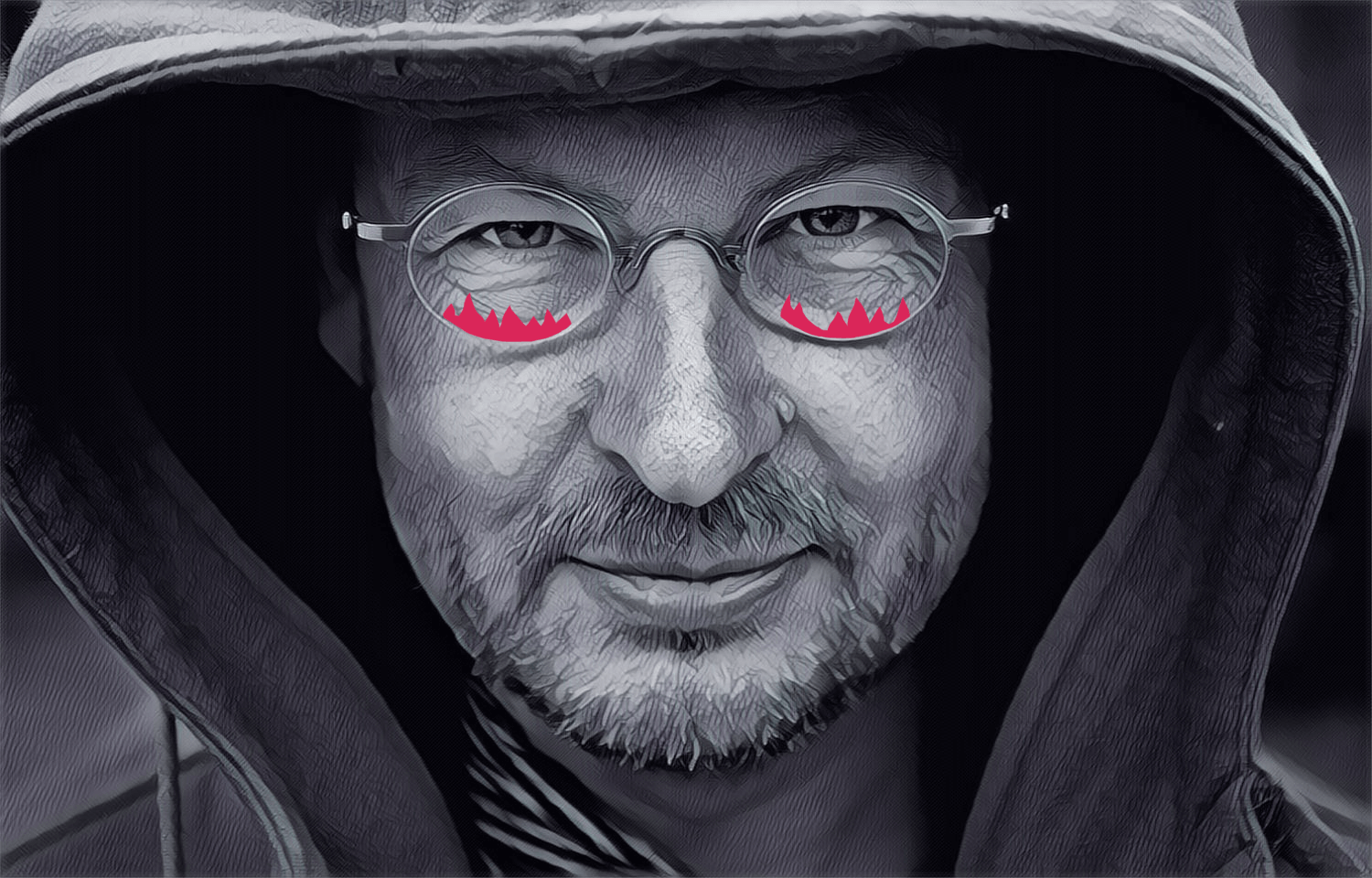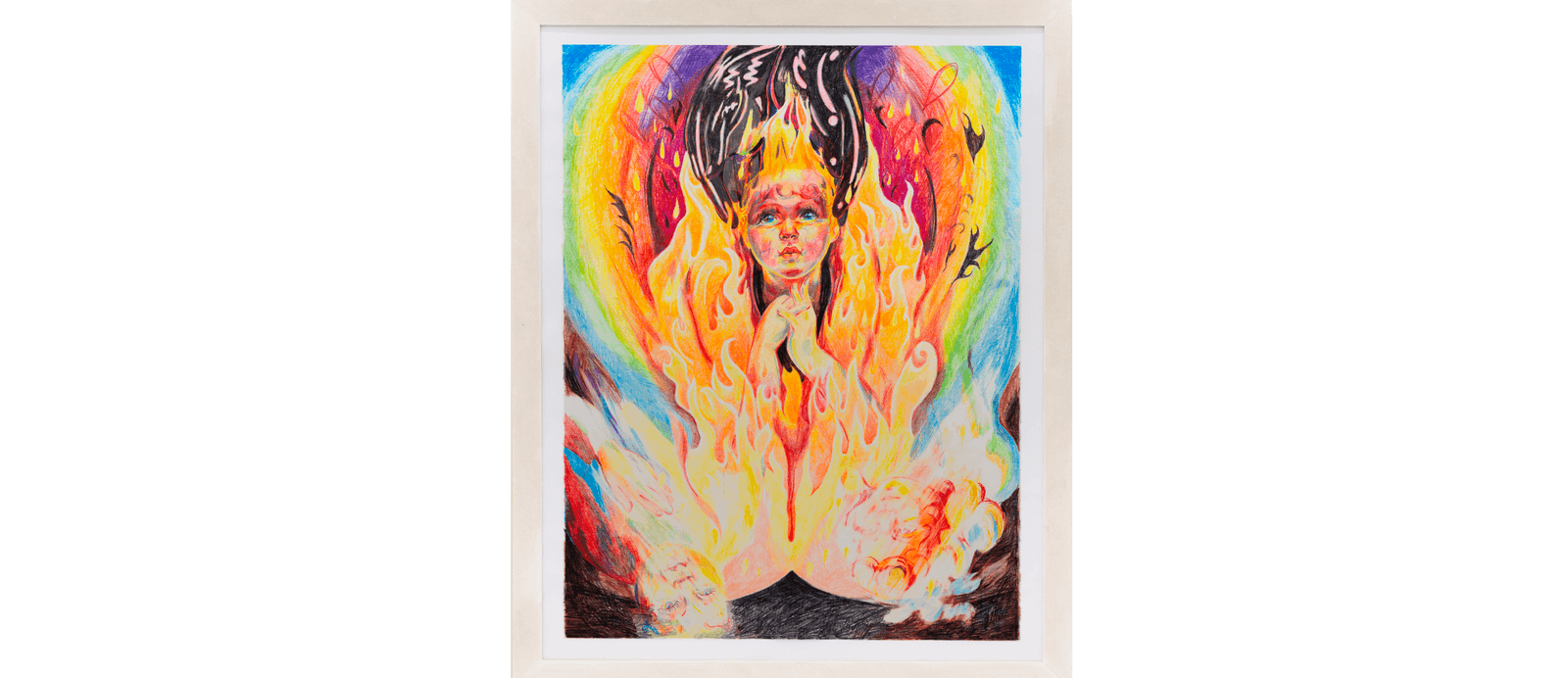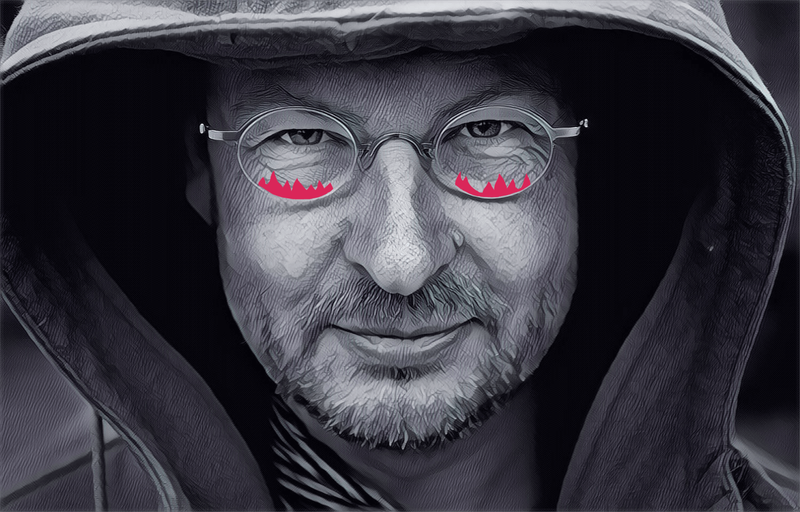The nuclear apocalypse has not yet arrived, and we are still here hoping this email will find you well. Or, at least, somewhat okay considering... Today, we invite you to learn how movies can illustrate purgatory as a reflection of external suffering.
In today's The Order:
- Discover Kira Kovalenko's movie about the patriarchal hell women of Caucasia forced to live in;
- Explore art made of garbage, a music video dedicated to Iranian women and an opportunity at the Florence contemporary gallery;
- Read about Lars Von Trier's first steps;
- Learn authoring tips from David Lynch;
- Watch Hayley Joseph's surreal paintings;
- Warm your creative muscles up with a mini exercise.
Sign up to our weekly newsletter discovering new names & opportunities and inspiring the Creators economy. It also has memes, of course.
New name
Unclenching the Fists: A Movie That Will Make You Clench Your Hands

Director Kira Kovalenko's Unclenching the Fists takes place in North Ossetia, an impoverished region in the Caucasus mountains. There, highly conservative views prevail and force people - especially women - to struggle for survival.
Main character Ada is a young girl in need of medical surgery. However, her strict and overprotective father is firmly against the procedure. Partially, his reluctance rises from the region's patriarchal attitude toward women. But mainly, his overprotectiveness is a result of the Beslan school siege of 2004, when Ada's mom died, and the girl herself was severely injured.
Kovalenko demands men unclench their fists and free Ada. Nonetheless, the girl's hands remain consistently clenched throughout the movie. The tension persists until the very end of the film and exhausts spectators.
Unclenching the Fists premiered at the 2021 Cannes Film Festival and won the Un Certain Regard award. Young director Kira Kovalenko became the first female director to win Cannes Film Festival's second most significant section. Unclenching the Fists has also been nominated for an Oscar.
Kovalenko left Russia for the U.S. after the war in Ukraine began. Now, she is working on a new movie.
Radar: new names, projects, possibilities
✨ How Diane Severin Nguyen manages to take make stunning pictures of nail clippings, braided hair, singed ribbons, wet candle wick ans other everyday garbage.
🔥 Irish singer Sevdaliza’s new music video dedicated to Iranian women.
👩🏾🎨 Open Call for Artists in the Florence contemporary gallery
💥 Jeffrey Deitch and Hamish Bowles Are Helping One of India’s Richest Women Open a Dazzling New Arts and Fashion Complex in Mumbai
First steps
Internal Hell: How Lars von Trier Started Shooting Movies

Lars von Trier has never been afraid to cross boundaries. His movies explore and revel in people's scariest yet common vices. Some think he's a madman. Others see him as a genius. He's often called a sadist, sexist, racist, Nazi, alcoholic and narcissistic narcissist. Meanwhile, Trier, without any doubts, calls himself 'the best director in the world.'
He received over 100 awards and 200 nominations for his movies. Five European Film Awards, the César Award, the Palme d'Or, as well as the Oscar and the Golden Globe nominations are among them.
Today, von Trier is 66, and in 2021 was diagnosed with Parkinson's. Yet, on September 1, 2022, he presented his new work at the Venice Film Festival: the third season of the mini-horror series Kingdom. Even with the disease, von Trier remained true to his style: by the end of the third episode, half of the audience had left the hall.
Fear of nuclear war
Lars von Trier was born on April 30, 1956, in Copenhagen. His parents were civil servants and propagandized leftist values. They supported freedom-of-choice education based on the idea that children must be treated as miniature adults and allowed to develop their skills in any direction they like. So, young Lars was left to his own devices, but it didn't do him any good. The boy needed someone to tell him what to do and what not to do - he got utterly lost in his unlimited freedom.
His relations with his mother were borderline unhealthy: neither of them knew where one's personality ended and the other's began. The director recalls: "There was a magical connection between us; I believed that as she said, so it would be." On top of that, his mother was mentally unstable, and Lars adopted many of her phobias.
His main fears were atomic war and appendicitis. The first phobia is quite understandable. The second one is less obvious: the boy was afraid of getting appendicitis because of the need to seek medical help. Lars used to lie in his bed for hours and figure out if his stomach hurt. Sometimes he would drag the mattress under the table and sleep there. He put a hot water bottle in case of appendicitis, a basin for sudden vomiting, headache pills and a wet cloth for fever next to him.
"After much thought, I decided that, no matter what, I still prefer appendicitis to atomic war. With appendicitis, I could just run away somewhere in the woods, hide there and die peacefully so that no one would interfere with me. Then I would have the opportunity to control events myself. But nuclear war... Well, every time I heard the sound of an airplane above me, I lay trembling all over, and I was absolutely sure that it had started now."
Due to his upbringing, von Trier could not graduate from high school - he could never adapt to the authoritarian education system. As a result, Lars spent 2-3 years of adolescence wandering around, drinking white wine and occasionally indulging in unprofessional experiments with brush, palette and canvas.
Love of cinema
But even before painting, there was cinema. Eleven-year-old Lars drew the one-minute cartoon, Journey to the Land of Pumpkins, with colorful rabbits as the main characters.
Moreover, Lars' love for cinema was inherited: his uncle Borge Horst was a well-known Danish documentary filmmaker. The boy got his first 8mm movie camera from his mother and has since kept collecting shooting gadgets and accessories. For 150 crowns, he bought a 16mm projector, and his mother brought him some films. Lars taught himself editing movies.
Today he remembers that he was especially impressed by a documentary about cockroaches and the scenes of Joan of Arc's interrogation. Moreover, the director recalls his fascination with Donald Duck comics: "Don't underestimate the dramatic influence of Donald Duck on an entire generation. I am absolutely sure that traces of these comics can be found in everything I do. Donald Duck is a common denominator, at least for my generation, because at the age when we read him, a person is as open as possible."
As a teenager, Lars was fascinated by the aesthetics of Nazism, which gave him a lot of trouble in his later career. He even collected items from the Third Reich and dressed up in Nazi uniforms. Thorkild recalls how, at the age of seventeen, they "sat in Lars' room, hung with posters of Che Guevara and furnished with beer crates and foam mattresses cut to mimic the shape of the room, and admired the old 8 mm film on which a German fighter during World War II entered into battle against the background of thundering rock music."
At seventeen, von Trier applied for the Copenhagen Film School. Unfortunately, he didn't get in. However, he didn't give up and joined the amateur cinematographer association, Filmgroup-16. Meanwhile, his uncle took him to work as an editor at the State Film Fund. There, in the evenings, he edited the material shot in the abandoned hangars of Filmgroup-16. Then he made two films, each lasting about half an hour: The Gardener growing Orchids (1977) and The Blessed Mente (1979). Both are filled with provocative sex scenes and reflect the emotional experiences of their creator about girls and art. Twenty-three-year-old Lars Von Trier presented them at the entrance exam when he returned to film school. The opinions of the admissions committee about Trier split. School principal Henning Kamre describes it this way: "I had the last word, and if Lars was a mistake, it was certainly one of the most interesting mistakes I've made."
Recalling the film school, Lars said, "none of the teachers inspired me with any respect, but the whole world of technology opened up to me." He annoyed his professors, violated discipline and quarreled with classmates. And once, he even wrote on the fence: "The Institute of Cinematography is dead — long live cinema!"
Initial success
Lars von Trier was not alone in his rebellion: he made friends with seventeen-year-old Thomas Gislason, who studied in America, and a student cameraman, Tom Elling. The future director described the beginning of friendship as follows: "Only a lazy one did not warn Tom and Thomas from communicating with me because it was allegedly harmful to them, both in human and career terms. I was a bad influence on them. But we considered everything that others were doing to be useless nonsense."
The trio shot strange pictures: experimented with techniques, tried to reach the unconscious viewer and provoked with plots. The teachers chuckled and shook their heads, considering it foolishness with no artistic value. The turning point was the film Nocturne, the first school movie to win a prize at the Munich Youth Festival. After that, the young people were allowed to do what they wanted. And the students were convinced that they were creating real works of art. Friends even hung a sign on the door to their cubicle: "We don't shoot movies here. We are making history."
Their graduation film The Picture of Liberation was another provocation: Nazi elements, chains, actors with Down syndrome, fire and contrasting light. But its plot is even more contradictory: it represents the Nazi as a victim.
His first film that opened the doors to big cinema was Element of Crime (1984), where von Trier acted as an actor, screenwriter and director, won prizes at film festivals in Cannes, Chicago and Mannheim.
The depression
In the mid-90s, Lars von Trier and his friend Thomas Vinterberg wrote a scandalous manifesto, Dogma 95. Its main idea was to destroy the traditions of the new cinema. The film Idiots, shot within the framework of this idea, caused a loud scandal. The film was shown at the Cannes Film Festival but received no awards.
Von Trier became known worldwide for the musical drama, Dancing in the Dark, with Bjork playing the main character. The movie won the Palme d'Or, and Bjork received the Cannes festival's prize as the best actress.
In 2007, the fifty-year-old Trier said he doubted whether he would ever make a movie again. Then, he suffered from severe depression. He describes his condition: "I generally felt then that life was over. That now everything will only get worse."
Lars even agreed to go to the psychiatric ward of the hospital. But the phobia of the doctors took over, and the director ran home the next day. So he signed up for sessions with a therapist and made a personal schedule so that "he wouldn't lie all day and not be in the wall." And it helped — Trier resumed work on the scripts. Later he shot his famous Trilogy of Depression, consisting of Antichrist (2009), Melancholia (2011) and Nymphomaniac (2013).
Tools

David Lynch is one of the most original and non–trivial directors of our time. Lynch began his career with painting, then drew short cartoons and comics. To shoot the debut picture Eraser Head, the young director had to give five years of his life. Yet, despite all the difficulties, he brought his idea to life. "The Eraser Head" became a cult picture, it was shown all over America, and David Lynch thoroughly established himself as a world-class director.
1. Find ideas inside yourself
Ideas are the most important thing. Follow them and look for them within yourself. Searching for an idea is like fishing. When you catch an idea, immediately write it down on paper so that when you read it later, you can remember and understand it. If you don't keep the idea, it will go away. So always find time to immerse yourself in yourself.
2. Keep writing
If you think you have nothing to say, start fantasizing. To make a full-length movie, you need 70 ideas. Write them down on the cards and connect them. Even if it doesn't work out at the beginning, keep writing; gradually, the flow of thoughts will find the right direction.
3. Edit later
If you are a novice author, do not be too critical of your work. Otherwise, you may not be able to finish even the first sketch. Instead, try writing the first draft with an open mind. Then correcting and polishing it would be easier.
4. Leave enough room for creativity
Every pause is like a stab. After that, you have to start all over again, and that's terrible. People get distracted almost every second these days. In other words, you must allocate free time to focus and do the hard work. Try turning off your phone and blocking social networks, and also tell others who may distract you that your working time is inviolable.
5. Rely on your feelings
Intuition is your primary tool. It is sensory knowledge, intelligence, and emotions fused. Stay true to what you first felt and imagined. Let these emotions influence your creative decisions. It's like catching ideas from the ether. Remember everything you saw, heard, and felt. In the future, these memories can grow into new ideas.
6. Pay attention to the details
Take care of every detail, work, and embody each of them. For example, a movie has many elements; you must pay attention to them, even the tiniest. Following this rule will eventually get a magical whole much more significant than each component. Even the most minor details must be authentic and match your vision. When all the correctly selected elements are connected, the magic of cinema happens.
7. Do not postpone creativity until tomorrow
Don't delay getting started. The faster you start, the sooner you will get into the necessary rhythm and gain momentum. Practice, you need technical knowledge, but it's better to learn by trial.
Visual of the day
Surreal paintings by Hayley Joseph

Artist Hayley Joseph's surreal paintings use bold colors and fabulous imagery to explore femininity, transformation, and mortality themes. Joseph's paintings use dark colors reminiscent of the fantastic landscapes of surrealist artists.
Joseph was born in Seattle, Washington. In 2011, Joseph S. received a Bachelor of Arts degree in Painting and Drawing from the Tyler School of Art in Philadelphia. Joseph continued her studies at Yale University, receiving a Master of Arts degree in Painting and engraving in 2014. Today Joseph lives and works in Brooklyn, New York.
Meme of the week

Creative warm-up
Describe 3 ideas of your future film. What would he be like? What would this story be about? Finally, what would the world in which events unfold look like? You can send it to us and get feedback, or keep it to yourself, or share with friends — as you wish.
Until next week!
Today's newsletter is brought by Alexey Shumkin, Mariya Amrayeva, Alyona Belyakova, Egor Mostovshikov
Your creative self starts in your inbox
Sign up to our weekly newsletter discovering new names & opportunities and inspiring the Creators economy. It also has memes, of course.






